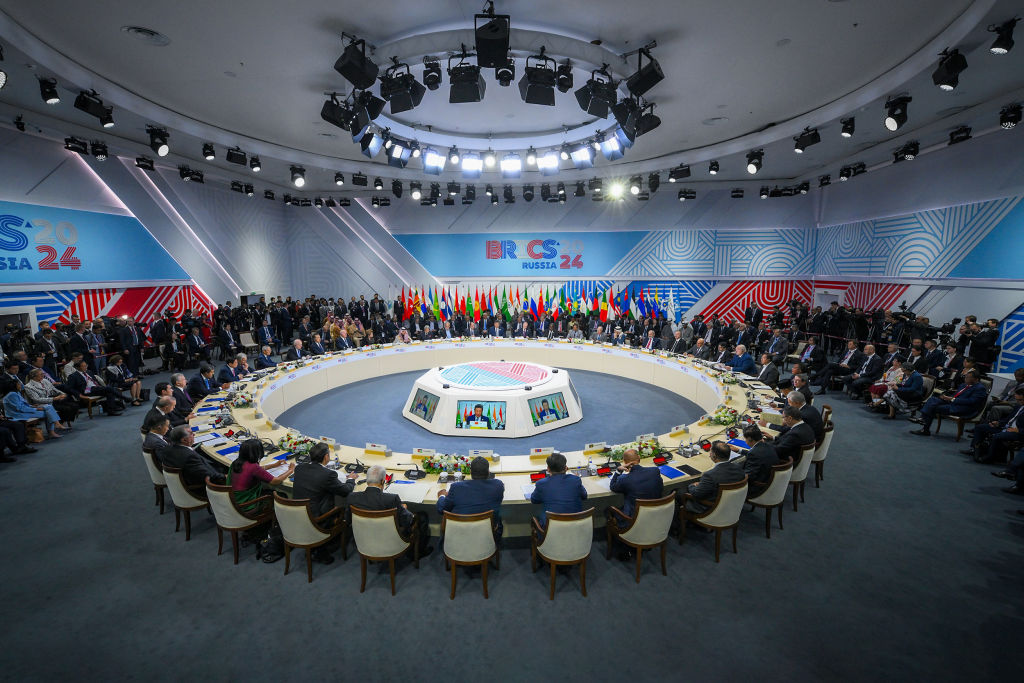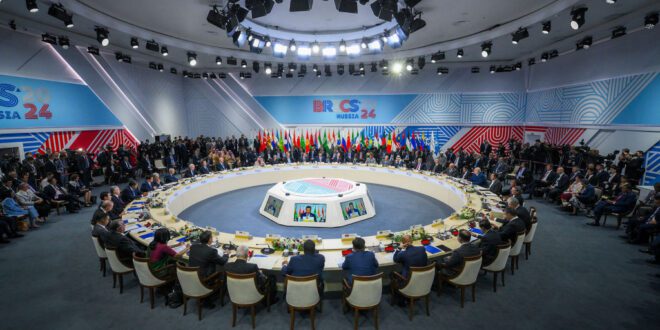
The Emerging Influence of BRICS
One question that 2025 may begin to answer is whether the BRICS group (Brazil, Russia, India, China, South Africa) is becoming the new center of power in world politics. Now that it has added new members (Egypt, Ethiopia, Iran and the United Arab Emirates) and come to represent 45 percent of the world population, some believe that it is consolidating the (misleadingly named) Global South and posing a serious challenge to US and Western power. But I remain skeptical of such claims.
When Jim O’Neill, then the chief economist at Goldman Sachs, coined the ‘BRIC’ acronym in 2001, his aim was simply to identify the four emerging economies that were most likely to dominate global economic growth by 2050. But the label soon acquired a political relevance. BRIC became an informal diplomatic grouping at the 2006 United Nations General Assembly and then a formal organization in 2009, with the first BRIC Summit. Hosted in Russia, the focus then, as it is now, was on advancing a multipolar world order. At the end of the following year, the group got its ‘S’ when South Africa joined.
Challenges and Limitations
A Wall Street asset class evolved into an international organization partly because it aligned with Russia’s and China’s own aspirations to lead the developing world. The BRICS 16th summit in Russia in October 2024 was the first to include its new members. Some 36 national leaders attended, as did representatives from many international organizations, including UN Secretary-General Antonio Guterres, and Turkey used the occasion to present its own application for membership.
With more countries showing an interest in joining, it looks like the BRICS could indeed present itself as a leader of the resistance to the US-dominated international order. Some even see it as the successor to the Cold War-era Non-Aligned Movement, whose members refused to choose between the United States and the Soviet Union. But while NAM had a shared interest in resisting the US, it did not have Russia and China as founding members.
In any case, the BRICS is unlikely to succeed in formally organizing the so-called Global South. Not only do its largest and most important members—China, India and Russia—all lie north of the equator, but the three are competing for leadership.
Internal Rivalries and External Challenges
Russia and China do have a common interest in countering what they see as an American threat, and they have declared an ‘alliance without limits’. But such slogans mask major differences in their strategic perspectives. While Russia took vast swaths of territory from China in the 19th century, when the Qing dynasty was weak, China’s economy is now 10 times the size of Russia’s. Both countries are vying for influence in Central Asia, and China is uneasy about Russia’s recruitment of its neighbor North Korea to fight in Ukraine.
An even more important limit on the BRICS as an organization is the rivalry between China and India, which is now the world’s most populous country. Although China is much wealthier than India, it is experiencing demographic decline (like Russia), while India’s population and workforce continue to grow.
Moreover, China and India share a disputed boundary in the Himalayas, where their forces have clashed repeatedly, and the situation is further complicated by China’s traditional friendship with Pakistan. In fact, an abiding concern about China is one reason why India participates in the BRICS in the first place.
Effectiveness and Future Prospects
Rather than making the BRICS stronger, the admission of new members merely imports more rivalries. Egypt and Ethiopia are locked in a dispute over a dam that Ethiopia is building on the Nile River, and Iran has long-standing disputes with the UAE and prospective member Saudi Arabia. These new intra-organizational rivalries will hamper its efforts.
At their 2024 summit, BRICS+ discussed matters such as economic and security cooperation, promotion of cultural exchanges, and joint development projects focused on infrastructure and sustainability. But such talk usually does not yield significant results.
So, what is the BRICS good for? As a means of escaping diplomatic isolation, it is certainly useful to Russia. As a diplomatic device for projecting leadership of the developing world, it also has been useful to China. But do these functions make it a new fulcrum of world politics? I think not.
 Mind Uncharted Explore. Discover. Learn.
Mind Uncharted Explore. Discover. Learn.
